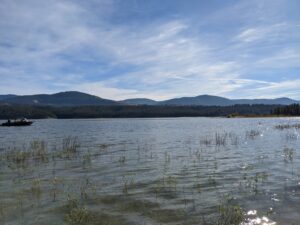Science & Data Solutions
Aquatic Invasive Species Surveys

Overview
Flowering rush (Butomus umbellatus) is an aquatic plant species from Europe and Asia. Unfortunately, it has been spreading across North America in the last century and is an invasive species. Flowering rush is now in portions of the Upper Columbia Basin in Washington. Also, it has been identified near Grand Coulee Dam in the Pend Oreille, Spokane, and Yakima River basins. This means that downstream spread into the mainstem Columbia and adjacent tributary junctions is likely.
The species was first listed as a Washington State noxious weed in 2009, and is now a high priority weed species. Washington State Noxious Weed Control Board and the Columbia Basin Cooperative Weed Management Area recommend early detection and rapid eradication techniques to limit future infestations.
Our Role
Working with our client’s staff, Four Peaks designed and implemented a study that mapped flowering rush populations. The study also mapped the environmental attributes and human lake and shoreline uses that influence aquatic invasive species colonization, spread, and persistence. Our field team then performed boat-based visual assessments, underwater scoping, and vegetation sampling for 112 miles of Lake Roosevelt’s shoreline. The survey and subsequent report:
- provided baseline monitoring data to assess continued flowering rush spread;
- informed potential restoration and control strategies; and
- built a conceptual model of future habitats that are likely to be colonized by flowering rush.
At A Glance
Client Type
Tribal Entity
Location
Lake Roosevelt, Washington
Project Timeline
2020
Service Area(s)
Watershed and Habitat Science
